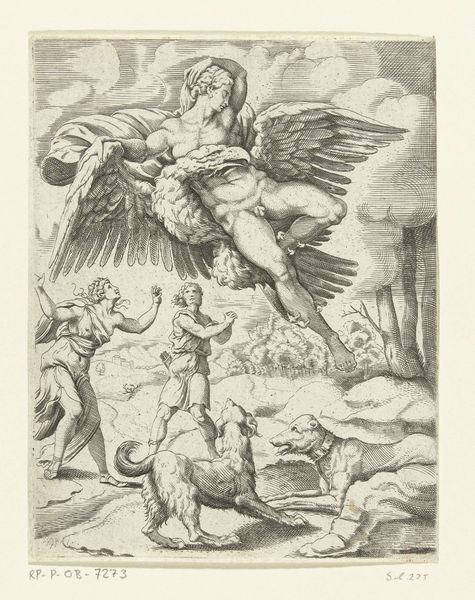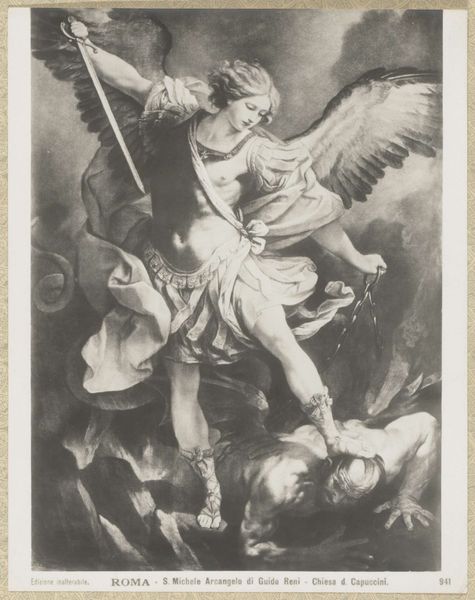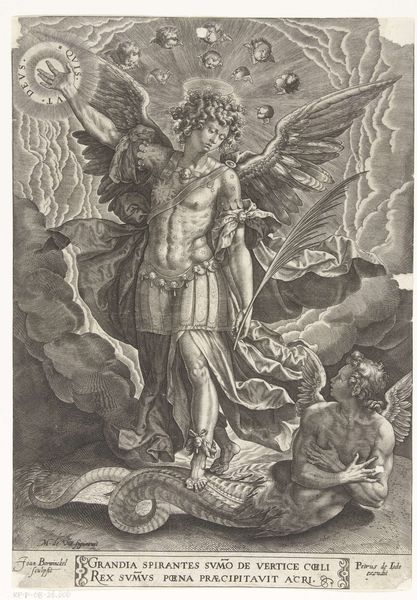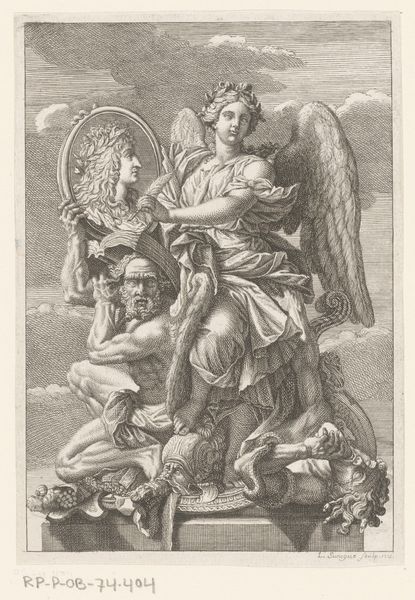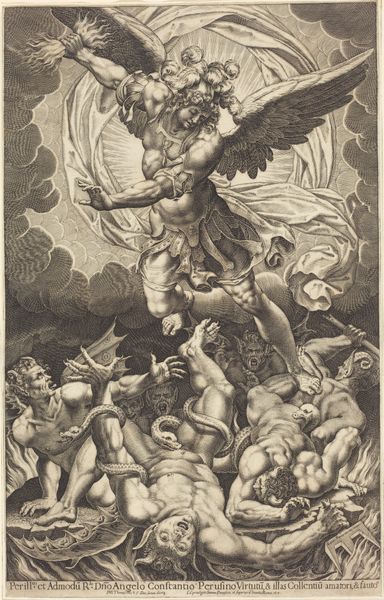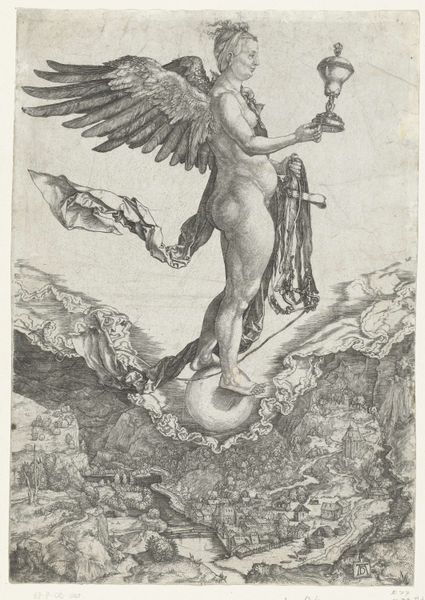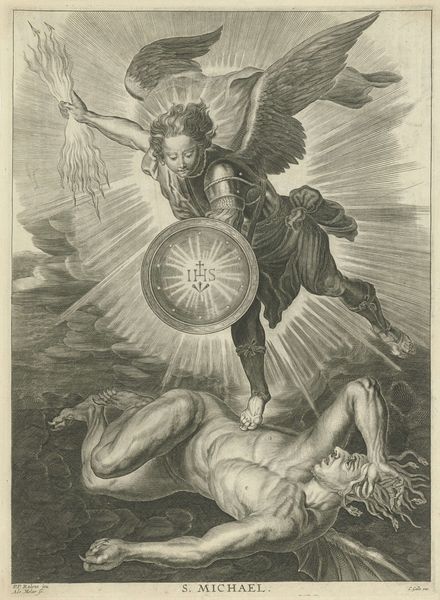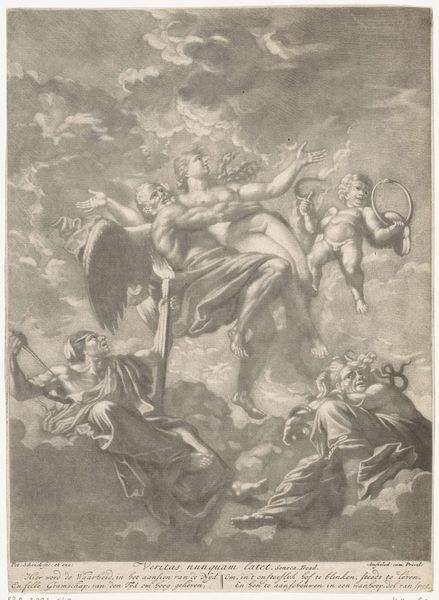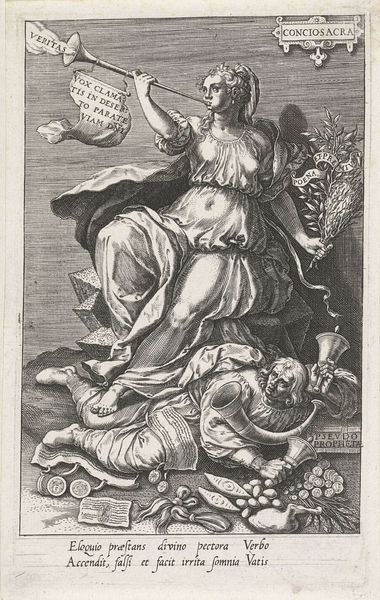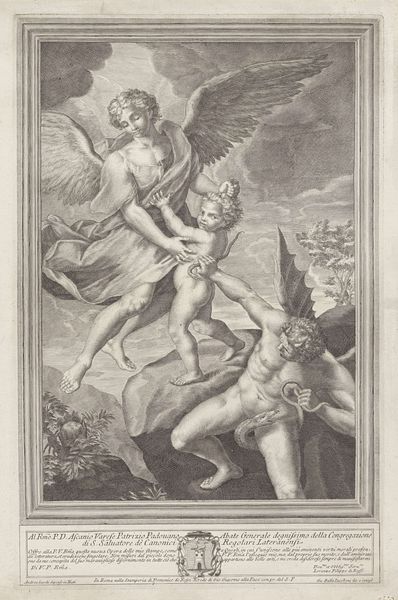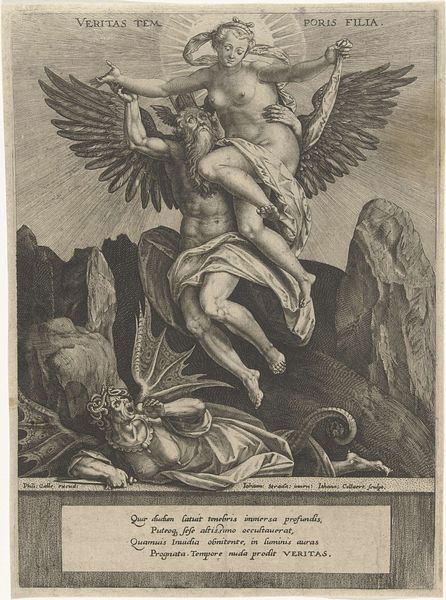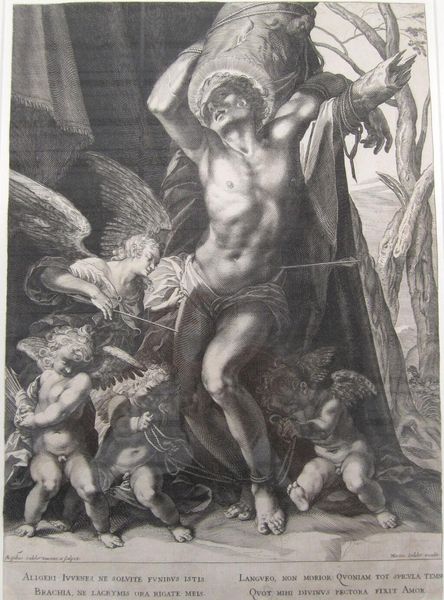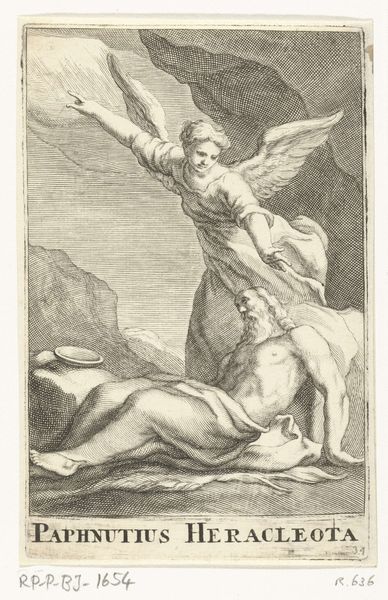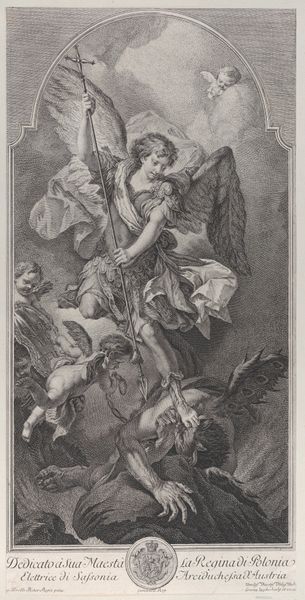
print, engraving
#
baroque
# print
#
figuration
#
line
#
history-painting
#
engraving
Dimensions: height 363 mm, width 258 mm
Copyright: Rijks Museum: Open Domain
Curator: Looking at this print, "Archangel Michael Trampling Satan," made sometime between 1623 and 1660 by Pieter de Bailliu, I’m struck by the crispness of the lines. What’s your initial reaction? Editor: A very dramatic piece! Michael's pose feels somewhat staged, theatrical even, with the flowing drapery and pronounced musculature. It makes me wonder about the societal impact such images had on popular piety during that period. Curator: Pieter de Bailliu's skill as an engraver is evident. The controlled, repetitive lines give form to every detail, from the texture of Michael's wings to the grotesque features of Satan. The labor invested here is substantial, wouldn't you agree? The act of creating prints meant this imagery could be circulated broadly. Editor: Absolutely, the reproduction capabilities of engraving are key. But let's also think about the iconography. This isn’t just about showcasing technical prowess. Images like this, commissioned perhaps by religious orders or wealthy patrons, played a crucial role in shaping public morality and reinforcing power structures. What does the visual rhetoric of dominance and submission communicate? Curator: Well, you're right to highlight the subject matter. This work definitely makes me reflect on the value given to different sorts of labour, both on earth and the division of divine labor. Someone, for example, designed this piece to convey that divine message you just noted. Editor: I agree! And look how the scene is constructed—the visual hierarchy with Michael above and Satan below sends a clear message of established order and triumph of good over evil. Curator: The line work itself contributes, the contrasting textures suggesting holiness versus corruption, and also high quality versus low. Consider also the chain in Michael's hand, linking the two figures almost like producer and product in this visual battle of morality and art. Editor: It's certainly an intricate construction with multiple layers of meaning embedded in its creation and dissemination. Thinking about the role art played within socio-political systems of its time really reshapes my initial interpretation. Curator: Yes, and that brings the discussion nicely back to where we started, focusing not just on art itself, but the societal and manufacturing contexts of its origins. Editor: I concur. It shows the importance of examining not only aesthetics but the undercurrent of messages presented within and around a piece.
Comments
No comments
Be the first to comment and join the conversation on the ultimate creative platform.
